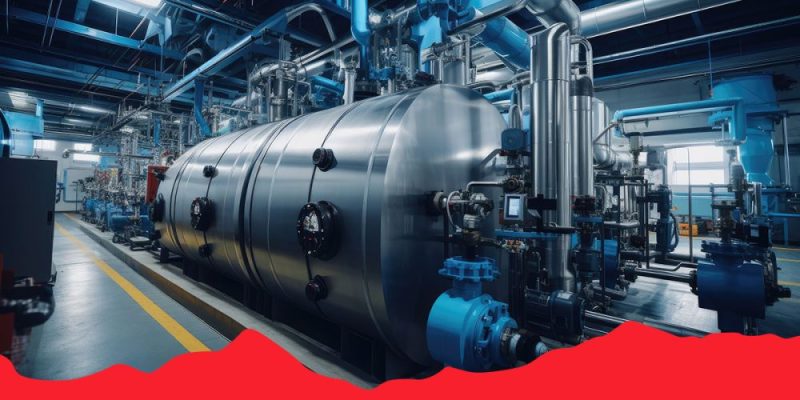- Contact Us
- Call Us
- Menu

The capabilities and properties of steam make it ideal for use in many industrial processes. Industries use steam for generating power and as a method of delivering heat. Steam is also used to produce food, paper, brewing, chemicals, textiles, rubber and many other items. Steam is an excellent energy source for several reasons, including being less expensive than alternatives and non-toxic.
This guide to steam for industrial processes will dive into the history of steam, types of steam for heating applications and the benefits of steam.
Pioneers were using steam before the Industrial Revolution. Historians trace the earliest steam engines to the first century C.E., but these simple spinning engines called aeolipiles were more novelties than practical devices.
It was only in the late 18th century that steam-powered inventions quickly found their way into various industrial settings — steam pumps for extracting water from mines, steam engine trains, and steam for powering boats, farms and semi-automated factories. Thanks to the advent of steam, new markets were expanded, improving the economy, infrastructure and quality of life.
Today, we still use steam for generating power, whether we use coal, gas, nuclear or geothermal energy as fuel.
Steam is typically created using boilers, but modern technology also allows manufacturers to produce steam using solar energy. Steam boilers create pressurized steam by using a fuel source, like burning coal, to heat water to its boiling point. There are two main kinds of boilers — firetube boilers and watertube boilers.
In firetube boilers, tubes containing a combustible fuel source heat a surrounding vessel of water until the water is hot enough to convert to steam. In watertube boilers, there are multiple metal tubes filled with water inside the boiler, and a combustible fuel source heats the pipes from the outside until they create steam.
In today’s applications, manufacturers prefer watertube boilers because they’re safer. Watertube boilers can also produce more pressure than firetube boilers, making them more efficient.
Not all steam is the same — several different types of steam for processing heating applications exist.
Unsaturated steam is the result when a boiler heats up and water bubbles break through the surface. The vapor contains liquid when it’s formed. Even using the best boilers, there will be some water molecules that aren’t vaporized in the process, making the steam “wet.” The non-vaporized molecules remain as water droplets or mist.
Dry or saturated steam results from heating water so that all its molecules remain in a gaseous state. Dry steam is produced by heating water in a closed chamber to its boiling point and then vaporizing it with additional heat through a process called latent heating. Dry steam occurs when the rates of water vaporization and condensation are equal.
Dry steam is an excellent heat source for several reasons:
Superheated steam is steam that’s at a higher temperature than the boiling point, or vaporization point, of the liquid under a given pressure. You get superheated steam by applying additional heat to dry steam. At this point, most, if not all, moisture is eliminated.
Superheated steam is thermodynamically efficient. Though superheated steam is hotter and more energetic than dry steam, and though it is used widely in power generation plants, it does not fit every application.
Other types of steam — which are forms of dry or superheated steam — include:

Steam, specifically superheated steam, has various industrial applications:
Using steam as an energy source is advantageous for several reasons:
MSEC, Inc. is a distributor and service provider of industrial process equipment, including valves, valve automation, actuators, heat transfer, steam specialties and instrumentation. MSEC works with some of the world’s leading manufacturers and distributors to provide processing and equipment solutions for industrial facilities. Since 1978, we have partnered with customers to optimize their processes and implement solutions that drive efficiency.
Our full-service company offers clients throughout the western United States a broad range of products and resources, including design, application, commissioning and product startup services. Contact MSEC today to request a free quote, or call us at 720-259-9291 to speak to our knowledgeable and experienced team.